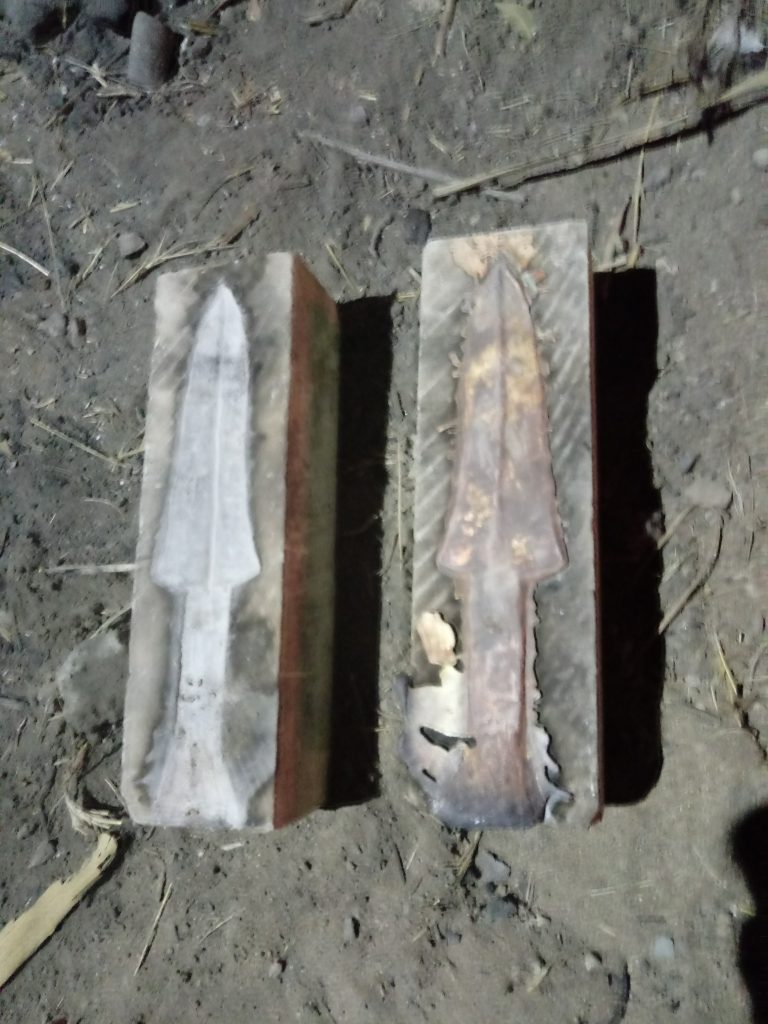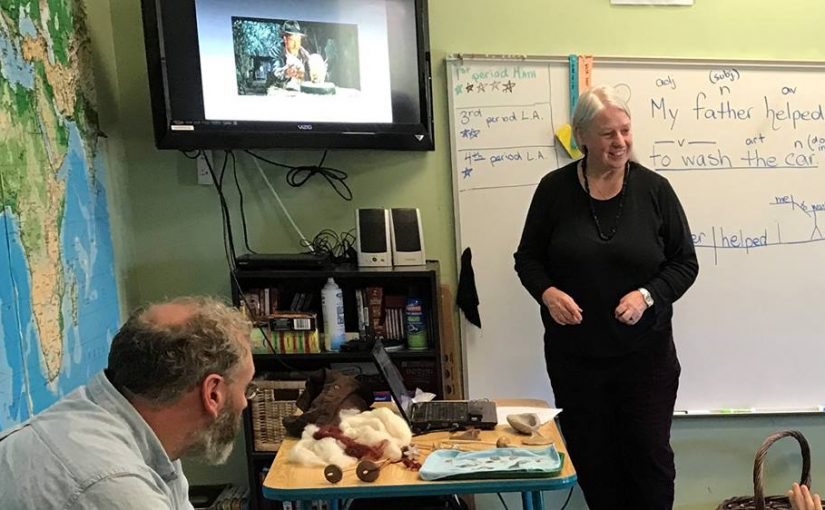
The 3rd Vounous Symposium went wonderfully well. We experimented with creating faience, including making it from locally resourced materials, resulting in what was named Vounous Blue. This year we had three furnaces, my little pit furnace from last year, one that is self drafting and one short shaft furnace. The self drafting one was used for the faience and small projects. It didn’t get quite hot enough for some things we needed, but the design was a work in progress. The shaft furnace was supposed to be for smelting ore. We had a couple of nice samples, but when we went to collect more, we found that the site was under water. Local members of Vounous will go back when the water is down and will collect more. Meanwhile we used what we had to make the pigment for the faience and smelt in a crucible. Since we had so little, we saved it for the evening of the closing ceremonies. People were impressed with the bright blue flames.
Chris, of Maunfactum Historicum carved limestone moulds for us to cast in, making replicas of knives and daggers that were excavated in the vicinity. He also carved an impressive Egyptian kopesh. We didn’t get that cast, but will try for next year. We wondered about the limestone because we’d always been told that it wouldn’t work. However the moulds we’d seen were local limestone, and we found that this worked very well. Apparently not all limestone is created equal.
The above photo is a replica of a dagger we saw at the Museum of Archaeology and Nature, Gurzelyurt ( Morphou) in its limestone mould. We’ve also cast daggers that are replicas of one that was found here at Vounous.
I wrote a short article for EXARC about last year’s Vounous Symposium. You can read it here.
